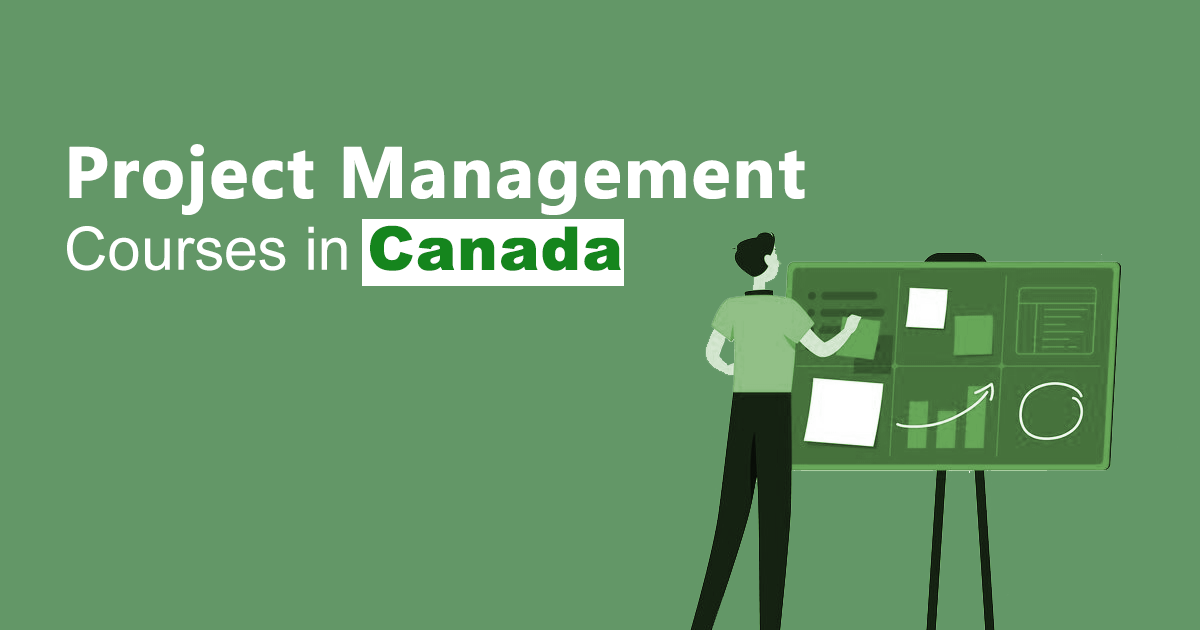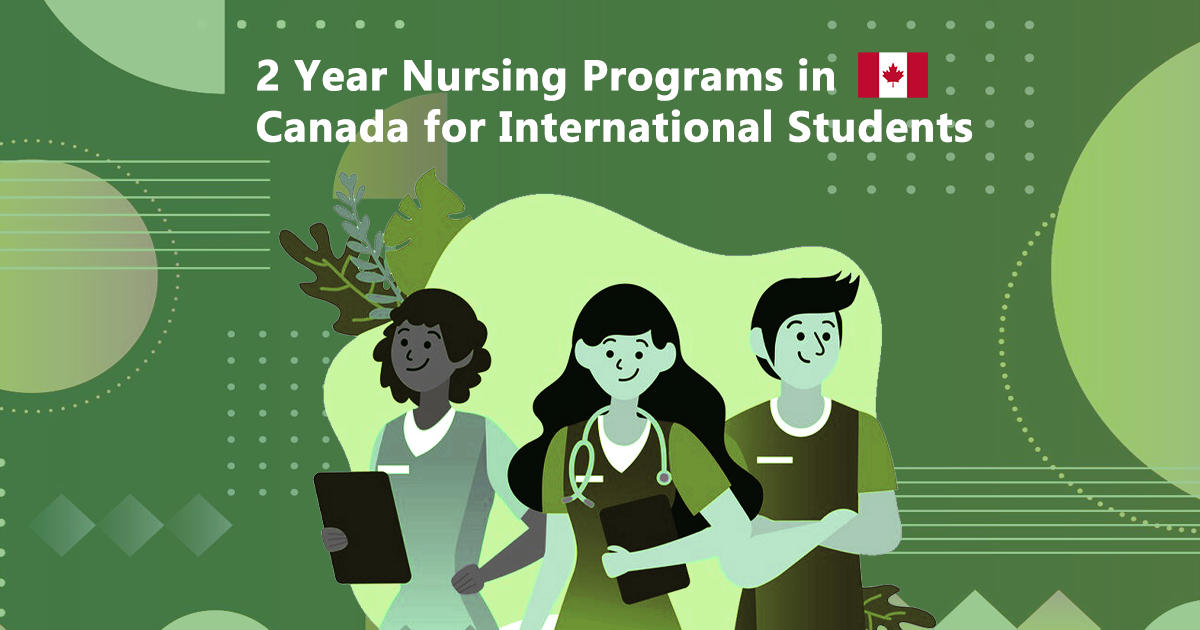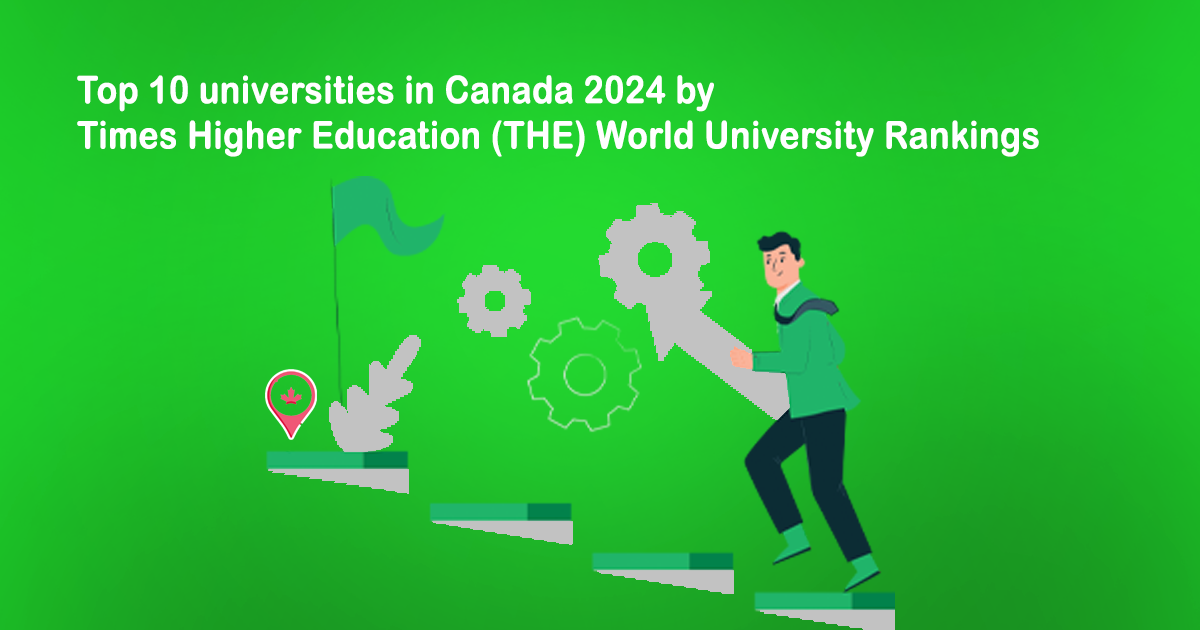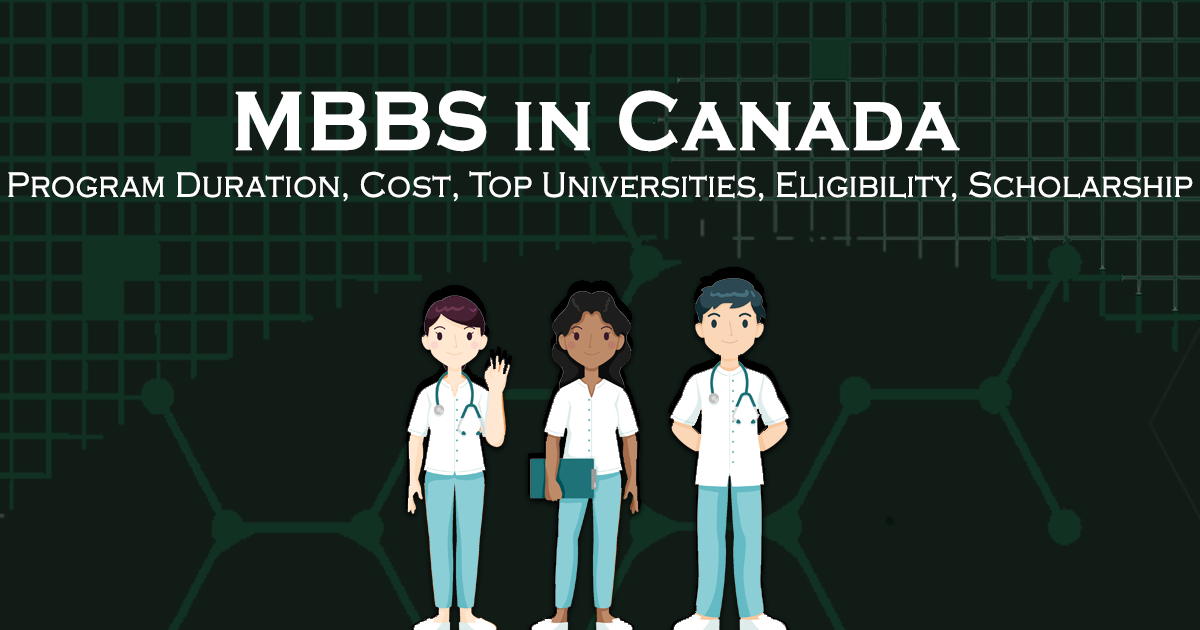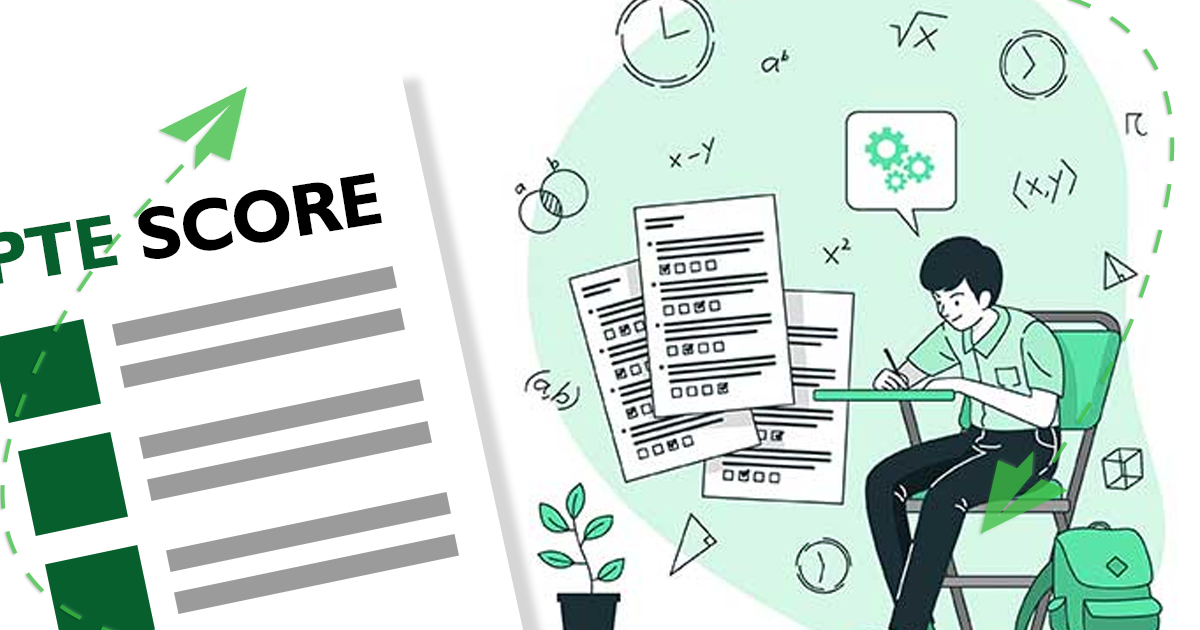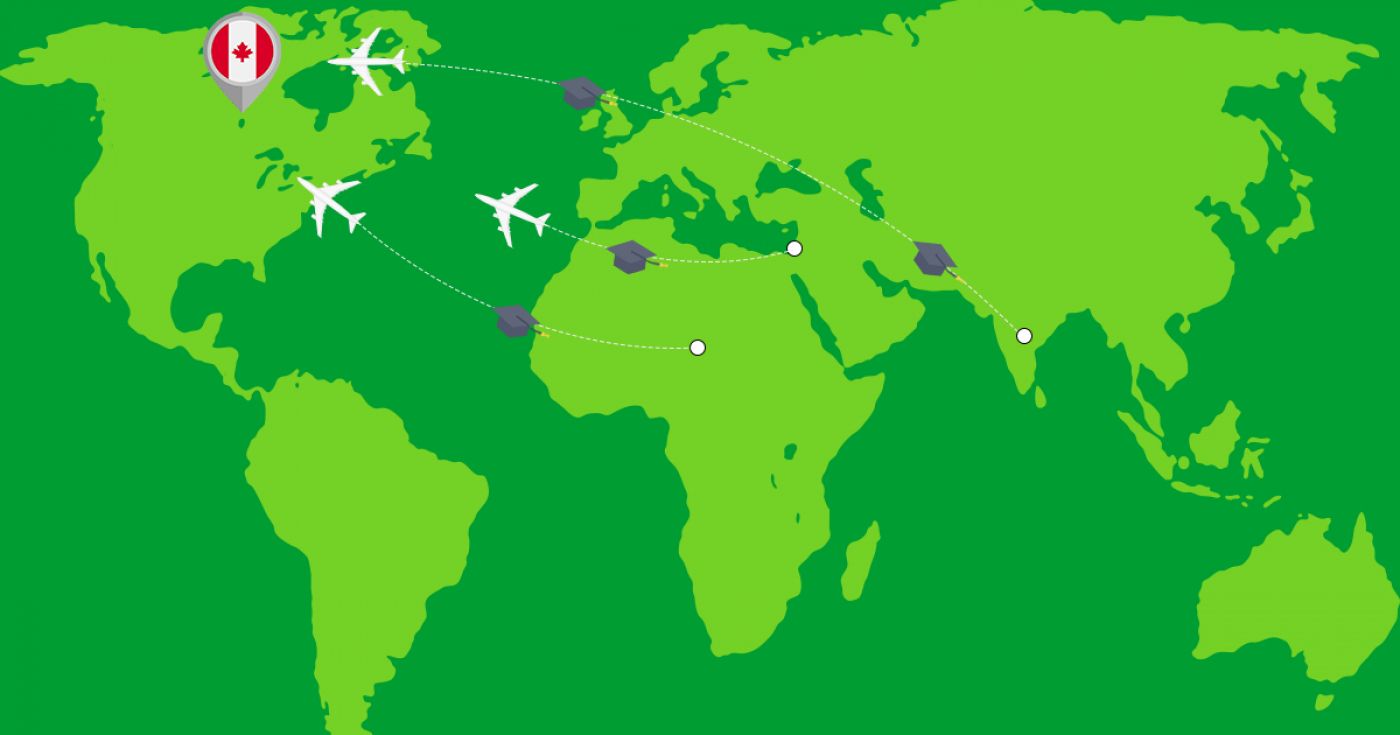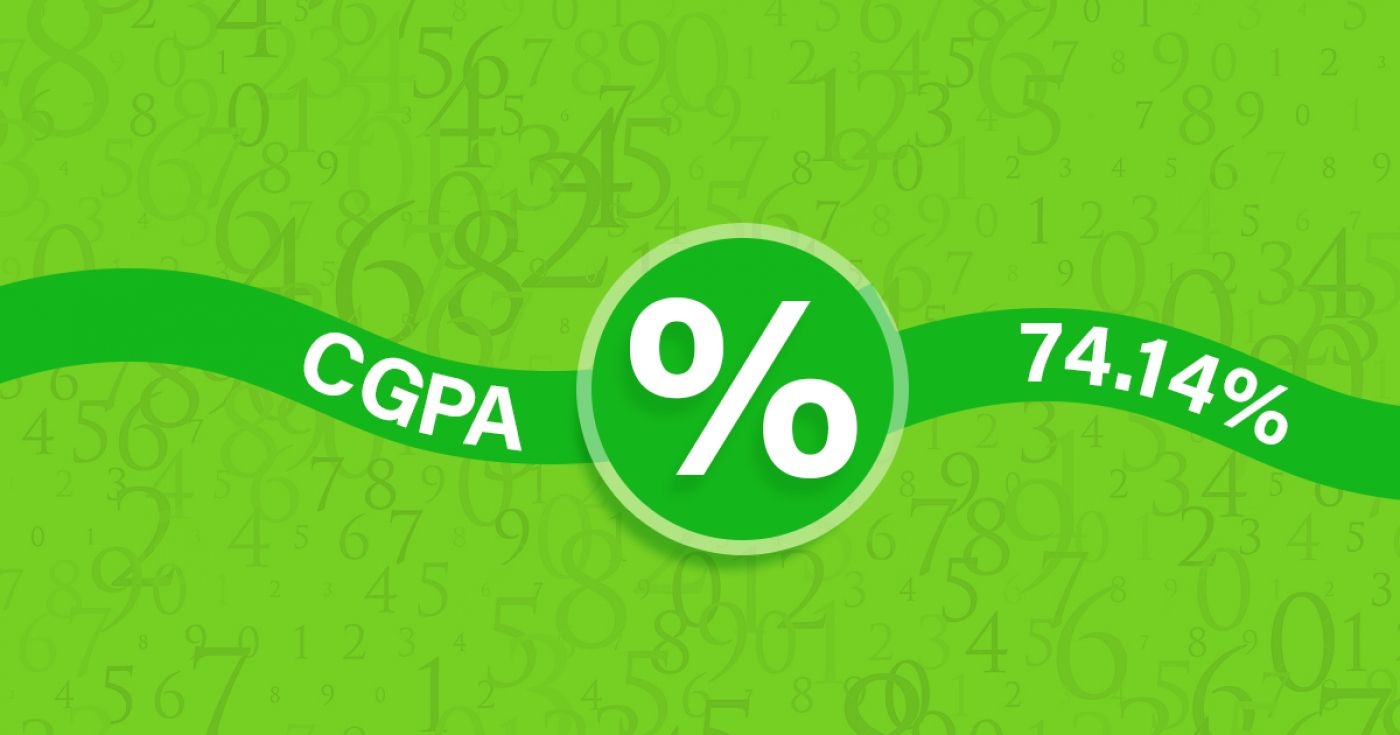Graduate Certificate in Wireless Networking
at George Brown College - Casa Loma Campus Canada
Overview
Wireless communications are pervasive in our lives. They have grown in recent years to include everything from personal communications networks to governments, hospitals and neighbourhood businesses. And there’s no end in sight to the growth of our wireless world.
George Brown College’s leading-edge Wireless Networking postgraduate program is designed to put you at the centre of this exciting world by giving you high-demand skills in radio frequency (RF), cellular, broadband and advanced data communications.
We offer you a unique choice of career direction. You can specialize in:
- Long Term Evolution (LTE) and Broadband Technologies
- Advanced Network Security
- Voice over Internet Protocol (VoIP) Technologies
Program Learning Outcomes
The graduate has reliably demonstrated the ability to:
- Test and measure RF (radio frequency) signals, attenuation and antenna systems.
- Assist with the preparation and execution of wireless site surveys.
- Build a wired and/or wireless computer network using system design documentation.
- Measure performance of both wired and wireless network components and applications using a variety of basic and advanced network management tools.
- Produce documentation and reports related to network components and applications performance.
- Troubleshoot and resolve technical problems related to both wired and wireless networks using standardized approaches and methodologies.
- Install and upgrade network hardware (e.g. workstations, servers, wireless access points, routers, switches, firewalls) and related components and software according to best practices in the industry.
- Monitor and evaluate network security issues and perform basic security audits on both wired and wireless networks.
- Assist in the collection and analysis of user requirements related to wired and wireless networks.
- Utilize change control, issue documentation and problem escalation procedures and processes as per industry best practices.
- Generate and maintain “as built” network documentation following industry best practices.
- Compare network performance against service levels and assist in the development of action plans as required against service level agreements.
- Employ concepts and practices as defined in ITIL (IT Infrastructure Library) to manage IT services and operation, including project management tools and techniques.
30
Application Processing Days
Post Graduate
Program Level
Fact & Figures
Full Time On Campus
Study Mode
12
Duration
George Brown College - Casa Loma Campus
Location
Graduate Certificate in Wireless Networking Assistant Fee
$23220
Tuition Fee
$12000
Average Cost of Living
$95
Application Fee
6
Backlogs Allowed
Graduate Certificate in Wireless Networking Admissions Requirements
- Minimum Level of Education Required: To be accepted into this program, applicants must have a College Diploma or Bachelor's Degree.

Get superfast admissions at top Graduate Certificate in Wireless Networking institutes in 2024
Benefits of choosing
➤Admission’s guaranteed at Top institutes across the world.
➤Enjoy exclusive application fee waiver’s with Edmissions.
➤Unlimited FREE Counselling sessions with Edmission’s
Experts
➤Get Tips from industry veterans to crack the IELTS exam in 1
week.
➤Assistance with scholarships, loans, forex, student accommodation and visa guidance.
Work Permit Canada
Students who wish to work in Canada require a work permit to do so. A student in Canada can work part-time during the course of his studies and full-time during holidays and semester breaks and post the completion of their course/program.
Rules for getting a part-time work visa in Canada
You can also work part-time on campus at your university.
Work Permit
Duration
Your part-time work permit will be valid for as long as you have a valid study permit.
Working Hours
20 Hours/Week
As a full-time student, you can work for a maximum of 20 hours a week. However, you can work full- time during holidays and breaks.
Document Required to Work in Canada
List
To apply for a work permit, you will need a study permit that mentions that you are allowed to work part-time on campus.
Social Insurance Number
Study Permit
You will need a Social Insurance Number (SIN) to Service Canada. if you wish to work in Canada during the course of your studies. To apply for the same, you need a valid study permit, and you should be a full- time student at a recognized university.

You can work part-time off-campus if you are studying in the Quebec province.
Duration of Work Permit Canada
Your part-time work permit will be valid for as long as you have a valid study permit.
Work Hours Canada
As a full-time student, you can work for a maximum of 20 hours a week. However, you can work full- time during holidays and breaks.
Document Required to Work in Canada
To apply for a work permit, you will need a study permit that mentions that you are allowed to work part-time on campus.
Social Insurance Number
You will need a Social Insurance Number (SIN) to Service Canada if you wish to work in Canada during the course of your studies. To apply for the same, you need a valid study permit, and you should be a full- time student at a recognized university.
Working after completing your course
In Canada, you will need a work permit to get a full-time job in Canada after finishing your studies. You chose a work permit like the Post-Graduation Work Permit (PGWP) if you wish to stay back in Canada and work full-time.
Visit Government of Canada Website for more detail
Post-Graduation Work Permit (PGWP)
The Post- Graduation Work Permit (PGWP) allows you to work for three years in Canada if you have completed a two years degree or more.
Application
how can i apply
You can either apply online or download the form and mail the application along with the required documents. Pay your fee and then wait for the decision to come.
Application Documents Required
List
To apply for the work visa, you need a degree from a recognized and accredited Canadian University along with an intention to stay and work in Canada only temporarily.
When to Apply?
One can apply for the full-time work permit in the first three months post the completion of their course during which the study permit is still valid.
How long does it take?
90 days
You will have to wait for 90 days for the decision on your work permit.
Duration
3 Years
The work permit is valid for 3 years if you have completed a two years degree program or more.
Fees
CAD 255
The fee for the work permit is CAD 255 plus the holder fee and the work permit processing fee.
Monthly Wages
CAD 1,600
An applicant is guaranteed a minimum salary of CAD 1,600 per month while working in Canada. This amount though varies on the job and the province you are working in.
Work Hours Canada
No Limit
There is no maximum limit, and you can work for as many hours as you want on the full-time work permit.

Required Documents
List
To apply for the work visa, you will need the following documents:
- Forms: IMM 5710, IMM 5476 and IMM 5475;
- Graduation Proof
- Proof of payment of work permit fees
- Copies of your travel and identification documents, passport pages and current immigration document.
Till a decision is made on your work visa, you can continue to work full time. All you need to have is your completed degree, should have applied for the permit before the expiry of your study permit and you should be allowed to work off-campus.
Information
Disclaimer
The information provided about the work permit is true and complete to the best of our knowledge. All recommendations are made without any guarantee on the part of the author or the publisher. The author and the publisher, therefore, disclaim any liability in connection to and with the use of this information.
Detailed Program and Facts
30
Application Processing Days
Full Time On Campus
Program Intensity
Post Graduate
Program Level
12
Duration
Study Visa
Student Visa For Canada
Any student who wishes to study in Canada requires a student visa. Some of the essential information for the application process is given below.
When Should I Apply?
4 to 6 months
Ideally, one should apply for the study permit at least 4 to 6 months before the commencement of your course/program.
Bank Account
No Need!
There is no need for a blocked bank account to apply for a student visa to Canada.
Duration of visa
Course Duration + 3 Months
The student visa is valid for the entire period of your course plus three months.
Time to Wait for Visa
35 Days
It takes time. It might take up to 35 days post your interview for the application process to complete and for you to finally receive your visa.
Appointment
Required
It varies from applicant to applicant, but one may have to take part in one or two visa appointments, namely a medical examination and a visa interview.
How you can apply
Application Process
An applicant can either apply online or offline by visiting a visa application centre and submitting their documents. After the analysis of your application, you might be called for an interview.
Fee
Visa Fee
The visa application fee for Canada is CAD 150.
Minimum Funds
833 CAD, 917 CAD
You require a minimum monthly amount to be deposited into your account to prove that you can sustain yourself while studying in Canada. If you are studying in Quebec, you need to have a monthly minimum of CAD 917, and if you are studying in a province except for Quebec, you need to have a minimum of CAD 833 per month.
Any other expenses
Required
You will have to pay a medical examination fee and a visa application service fee to the tune of CAD 15 if you visit a visa application centre to apply for your visa.

Medical Examination
Required
One has to undergo a series of medical examinations to be deemed fit for a student visa of Canada. The tests mostly include blood and urine tests, chest x-rays and other organ checkups.
Language Skills
Not Required
one doesn’t need to prove their language skills in applying for a Canadian Visa.
Disclaimer: The information provided about the work permit is true and complete to the best of our knowledge. All recommendations are made without any guarantee on the part of the author or the publisher. The author and the publisher, therefore, disclaim any liability in connection to and with the use of this information.
Other Courses by George Brown College - Casa Loma Campus,Canada
Creative Arts & Design
Diploma in Jewellery Methods
The Jewellery Methods program provides you with the skills and abilities necessary to succeed in this demanding profession as a goldsmith/bench jeweller. The essential skills of measuring, sawing, filing, soldering and finishing are stressed early in the program. These skills are built upon through the introduction and practice of many traditional and contemporary techniques. Once essential skills are achieved, you study more advanced goldsmithing techniques, jewellery repair, gemsetting and model making, as well as jewellery elective subjects.
Jewellery history, technical drawing, gemmology and an overview of the industry are included to provide you with a broad knowledge of the jewellery field.
Program Learning Outcomes
- The graduate has reliably demonstrated the ability to:
- Create jewellery items in copper, brass, silver and gold, using fundamental goldsmithing skills for entry-level employment in the jewellery industry.
- Create wax models using hand-carving techniques.
- Set gemstones in simple settings to industry standards.
- Repair jewellery to industry standards and to meet customer satisfaction.
- Produce multiple reproductions of jewellery using the lost wax casting process.
- Incorporate polishing techniques to produce market ready jewellery items.
- Differentiate gemstones and their properties as required in the jewellery industry.
- Contextualize jewellery according to historical and stylistic qualities to assess provenance, materials and method of production.
- Use technical drawing techniques to communicate jewellery designs as required.
- Follow ethic, security and business practices consistent with jewellery industry standards.
- Employ jewellery tools, equipment and materials in a confident and safe manner.
- Use computer software (CAD) skills to produce 2D drawings and 3D models of complex jewellery forms.
- Produce a professional portfolio that documents attained skills for employment applications.
- Construct finished jewellery pieces according to given designs.
24 month
Duration
$ 14600
Tuition
Computer Science & IT
Graduate Certificate in Cyber Security
The Cyber Security graduate certificate program at George Brown College is designed to meet the high demand for cyber security professionals and related IT security professionals across multiple sectors – including consulting services, finance and health care.
As a student in this program, you will begin with learning the theory and practical skills required to become a cyber security professional, including the differences and similarities between cyber security and hacking. You will learn about the primary attack surfaces (physical, social, electronic), methods for compromising the attack surfaces, and how to mitigate potential attacks.
In the third semester, you will learn advanced techniques in ethical hacking incident response. A capstone group project will provide you with an opportunity to showcase your skills and talents for potential employers. These skills include:
- Digital forensics and incident response management
- Ethical hacking and analyzing malware
- Delivering security training
- Applying cryptography
In addition to traditional technical skills, the cyber security professionals of today require many non-technical skills and talents, such as:
- Analytical skills
- Written and verbal communication
- Project and time management skills
- Interpersonal and conflict management skills
Students graduating from this program are prepared to help defend organizations from the many cyber threats, including malware, network attacks and data compromise. They will have the capabilities to monitor, assess and evaluate security risks and threats to physical and digital infrastructure, develop and implement security contingency planning, and lead the development of policies and procedures to ensure the mitigation of security risks.
12 month
Duration
$ 23220
Tuition
Computer Science & IT
Graduate Certificate in Applied A.I. Solutions Development (Co-op)
As we advance further into this increasingly digital world, Artificial Intelligence and Data Science will revolutionize most industries by optimizing business processes and automating decision-making in many white-collar jobs. The Applied A.I. Solutions Development program will instill graduates with the skills needed to provide existing businesses and emerging startups with the tools required to thrive in the digital revolution.
This three-semester graduate certificate program uses a hands-on, applied approach to the field of A.I., giving students the broad range of skills needed to excel in this rapidly growing industry.
It teaches the development and application of Machine Learning/Deep Learning models and provides a fundamental understanding of the underlying mathematical algorithms that power them. This combination of knowledge and skills will allow graduates to identify and select appropriate algorithms for a given use, build and fine-tune models, and visualize and effectively communicate the resulting data, thereby bridging the traditional roles of Data Scientist, Machine Learning Engineer and Business Translator.
Your Field Education Options
- To be eligible for co-op, a student must complete all Semester 1 and Semester 2 courses. As well, an overall GPA of 3.0 must be achieved.
- During the third semester of the program, students may choose whether to apply for a Co-op position or take a Work Integrated Learning course that includes an industry-sponsored project.
Program Learning Outcomes
- The graduate has reliably demonstrated the ability to:
- Identify, evaluate and manage relevant data sources to support data analytics and to meet organizational needs.
- Recommend different systems, architectures and data storage technologies to support data-driven solutions.
- Develop and deploy complete Machine Learning/Deep Learning production systems for a variety of industry use cases that meet the needs of a specific operational/business process.
- Assess and apply appropriate mathematical models, algorithms, tools and frameworks to develop A.I.-enabled, industry-specific solutions.
- Design and present A.I. solutions effectively to stakeholders through the use of data visualizations.
- Apply legal, ethical, privacy and security-related standards and considerations in data science projects in a manner that protects privacy and confidentiality, addresses data bias and transparency, and ensures data integrity.
- Implement artificial intelligence systems on time and budget using best practices and strategies in design thinking, project management and lifecycle management.
- Design artificial intelligence (A.I.) systems through the application of systematic approaches and methodologies to meet growing organizational needs.
12 month
Duration
$ 23220
Tuition
Skilled Trades
Certificate in Plumbing Techniques
The Plumbing Techniques program covers residential, commercial and industrial applications in the plumbing industry, paying particular attention to residential plumbing. It is a hands-on program that may benefit anyone seeking to enter an apprenticeship or any construction-related career path.
Through hands-on projects you will learn about:
- Tools, materials, equipment and methods used in the plumbing industry
- Estimating materials and labour costs
- Proper use of hand tools and power tools
- Safety practices and procedures associated with these tools
The program includes studying industry standards and building codes while considering health and safety issues and energy conservation.
Projects include:
- Constructing and testing both drain and water systems
- Learning how to install hot water heaters and a variety of residential plumbing fixtures.
- Research on the science of sanitation, water, and the forces acting on a sealed piping system with and without atmospheric pressure applied to it.
- Studying blueprints and learning basic drafting techniques that will enable you to design, comprehend and build plumbing systems.
- A final project will focus on how to maintain the plumbing system you install and those that you may encounter in the future.
Program Learning Outcomes
- The graduate has reliably demonstrated the ability to:
- Work according to contractual obligations; the project manual; and applicable laws, standards, bylaws, and codes.
- Perform residential plumbing projects effectively and accurately by interpreting and producing basic data in graphic, oral and written formats.
- Work responsibly and effectively with others and in accordance with appropriate practices, procedures and in compliance with health and safety legislation.
- Use tools and equipment for basic installation manufacture, and repair of components to required specifications.
- Contribute to the organizing and planning of residential plumbing installation projects.
- Solve routine problems related to work environments using a variety of systemic approaches.
12 month
Duration
$ 15190
Tuition
Creative Arts & Design
Advanced Diploma in Interior Design Technology (Co-op)
The three-year Interior Design Technology advanced diploma program prepares you to be an Interior Design Technologist. You will be a valuable member of the design team for building retrofits, renovations and new construction, contributing to the technical design of building interiors by design development of plans, elevations, renderings and 3D models.
Learning in state-of-the-art interior design studios with the most up-to-date equipment and software, you will develop a thorough knowledge of interior design and technical design skills.
Through the application of interior design theory, you will learn how to effectively communicate the applied and technical principles of interior design. As a graduate, your area of specialization might include, but is not limited to, the following:
- Bathroom and kitchen design/build
- Commercial, retail or manufacturing technical sales
- Fitments, colour or texture finishes selection and consultations
- 2D and 3D computer drawing, design, rendering and modeling
- Sustainable interior design practices for commercial, retail and residential
Note: If you enrol in the program in January, you are required to complete semester 2 in the summer (May to August) of the same year in order to continue into semester 3 in the fall.
Program Learning Outcomes
- The graduate has reliably demonstrated the ability to:
- Analyze a client's needs and goals by using research methodology and techniques.
- Prepare a design proposal.
- Analyze design components by using the creative process.
- Prepare an appropriate design concept of three-dimensional form which meets the criteria of a given design project by using the creative process.
- Execute appropriate presentation techniques to communicate the design concept.
- Prepare a design which reflects the concept by using current and relevant information.
- Communicate to the client the proposed design solution for approval.
- Prepare documentation needed for the implementation of the design.
- Collaborate as part of the management team, as the client's agent, in the implementation of a design project to ensure that the project reflects the design solution.
- Evaluate completed design solutions.
36 month
Duration
$ 15190
Tuition
Creative Arts & Design
Certificate in Jewellery Essentials
The Jewellery Essentials program provides you with the skills and techniques necessary to begin a career in the jewellery industry. You will learn to saw, file, solder, grind, polish and finish metals including copper, brass, silver and gold. Fabrication and centrifugal casting techniques will be used to create jewellery pieces to high standards.
12 month
Duration
$ 15190
Tuition
Skilled Trades
Certificate in Construction Techniques
The Construction Techniques program covers popular construction trade areas and has three intakes per year.
This program is designed to offer you choices when considering a career in the construction sector. It exposes you to a variety of trades allowing you to determine where your interests lie. The program will prepare you with basic skills that will assist you in taking the next steps in your career path.
- Semester 1: Electrical/Millwrighting
- Semester 2: Sheet Metal/Air Conditioning/Carpentry
- Semester 3: Welding/Steamfitting/Plumbing
Through practical projects interwoven with theoretical learning, you will gain confidence and experience in the individual trade sections, giving you the information necessary to make informed career choices as well as a good understanding of the construction process.
Program Learning Outcomes
The graduate has reliably demonstrated the ability to:
- Identify and use strategies to enhance professional growth and ongoing learning in the construction field.
- Identify and adhere to established health and safety practices.
- Perform all construction tasks in compliance with applicable laws, regulations, codes and ethical practices in the construction field.
- Work in accordance with established sustainability practices.
- Collaborate with a range of tradespersons and project stakeholders to maintain effective working relationships.
- Communicate technical information to a variety of clients, supervisors and tradespersons to participate in the successful completion of construction projects.
- Identify and use industry-specific technologies to support construction projects.
- Solve on-site trade-related construction problems using mathematical equations and geometric concepts.
- Select, maintain and safely operate hand and power tools and equipment used in the building construction trades.
- Assist in the preparation of project estimates.
- Assist skilled tradespersons and perform labouring tasks at construction sites.
12 month
Duration
$ 15190
Tuition
Computer Science & IT
Diploma in Computer Systems Technician
As the Information Technology (IT) sector continues to grow in Toronto and our industry partners report skills shortages, George Brown College is helping to meet employer demand by educating IT professionals who understand all aspects of computer systems. Our two-year Computer Systems Technician program provides students with a broad and in-depth technical base, through courses in the high-demand areas of system support, network administration and web technologies. The curriculum prepares graduates with the strong administration, troubleshooting and design skills they need for careers in IT.
As the Information Technology (IT) sector continues to grow in Toronto and our industry partners report skills shortages, George Brown College is helping to meet employer demand by educating IT professionals who understand all aspects of computer systems. Our two-year Computer Systems Technician program provides students with a broad and in-depth technical base, through courses in the high-demand areas of system support, network administration and web technologies. The curriculum prepares graduates with the strong administration, troubleshooting and design skills they need for careers in IT.
George Brown continues to invest in up-to-date networking, wireless and security lab equipment to help students develop hands-on installation, configuration and troubleshooting skills. Students use the NetLab platform, which enables them with 24/7 remote access to Cisco Systems physical equipment. This investment, along with our hands-on teaching environment, was recognized by Cisco when the college was designated an Area Support Centre and Instructor Training Centre.
Graduates of the Computer Systems Technician program are prepared to write several industry certification exams that are in demand by employers.
Program Learning Outcomes
The graduate has reliably demonstrated the ability to:
- Identify, analyze, develop, implement, verify and document the requirements for a computing environment.
- Contribute to the diagnostics, troubleshooting, documenting and monitoring of technical problems using appropriate methodologies and tools.
- Implement and maintain secure computing environments.
- Implement robust computing system solutions through validation testing that aligns with industry best practices.
- Communicate and collaborate with team members and stakeholders to ensure effective working relationships.
- Select and apply strategies for personal and professional development to enhance work performance.
- Adhere to ethical, legal and regulatory requirements and/or principles in the development and management of computing solutions and systems.
- Assist with the implementation of computer systems.
- Install, configure, troubleshoot, maintain, upgrade and decommission computing system infrastructures.
- Automate routine tasks using scripting tools and programming languages.
- Provide technical support for computing system infrastructures that aligns with industry best practice.
- Implement the basic concept, principles, and scope of DevOps.
- Apply task automation using configuration management and the Cloud.
- Automate network administrative tasks across distributed clients.
24 month
Duration
$ 15190
Tuition
Computer Science & IT
Graduate Certificate in Wireless Networking
Wireless communications are pervasive in our lives. They have grown in recent years to include everything from personal communications networks to governments, hospitals and neighbourhood businesses. And there’s no end in sight to the growth of our wireless world.
George Brown College’s leading-edge Wireless Networking postgraduate program is designed to put you at the centre of this exciting world by giving you high-demand skills in radio frequency (RF), cellular, broadband and advanced data communications.
We offer you a unique choice of career direction. You can specialize in:
- Long Term Evolution (LTE) and Broadband Technologies
- Advanced Network Security
- Voice over Internet Protocol (VoIP) Technologies
Program Learning Outcomes
The graduate has reliably demonstrated the ability to:
- Test and measure RF (radio frequency) signals, attenuation and antenna systems.
- Assist with the preparation and execution of wireless site surveys.
- Build a wired and/or wireless computer network using system design documentation.
- Measure performance of both wired and wireless network components and applications using a variety of basic and advanced network management tools.
- Produce documentation and reports related to network components and applications performance.
- Troubleshoot and resolve technical problems related to both wired and wireless networks using standardized approaches and methodologies.
- Install and upgrade network hardware (e.g. workstations, servers, wireless access points, routers, switches, firewalls) and related components and software according to best practices in the industry.
- Monitor and evaluate network security issues and perform basic security audits on both wired and wireless networks.
- Assist in the collection and analysis of user requirements related to wired and wireless networks.
- Utilize change control, issue documentation and problem escalation procedures and processes as per industry best practices.
- Generate and maintain “as built” network documentation following industry best practices.
- Compare network performance against service levels and assist in the development of action plans as required against service level agreements.
- Employ concepts and practices as defined in ITIL (IT Infrastructure Library) to manage IT services and operation, including project management tools and techniques.
12 month
Duration
$ 23220
Tuition
Architecture and Construction
Bachelor of Technology (Honours) in Construction Management
The Honours Bachelor of Technology (Construction Management) program provides a dynamic curriculum that integrates theory, applied research, field study and hands-on practical education. Recognizing that today’s successful construction manager must possess both technical and managerial competencies, the curriculum combines studies in construction science and technology with studies in business and management methods as applied to construction.
Students obtain the knowledge and skills to manage the functions and processes of construction projects from start to finish. They master construction-related technical disciplines and soft skills that are critical to completing projects on time and within budget. Graduates of this program are entitled to the academic credential designation of Hons. B.Tech. (Construction Management).
The Honours Bachelor of Technology (Construction Management) program is well recognized by the construction industry and is fully accredited by the Canadian Institute of Quantity Surveyors (CIQS), the Chartered Institute of Building (CIOB), and the Royal Institution of Chartered Surveyors (RICS). Graduates of this program are qualified to obtain professional memberships in various construction management associations. Professional memberships are based on the candidate’s education, training, and work experience.
With the completion of this degree program, graduates will have satisfied all academic requirements for professional membership of the Chartered Institute of Building (CIOB), the Canadian Institute of Quantity Surveyors (CIQS), and the Royal Institution of Chartered Surveyors (RICS). Memberships in these associations must be applied for separately.
Graduates also qualify to obtain their Gold Seal Certification (GSC) offered by the Canadian Construction Association (CCA) to become certified Superintendents, Estimators, Project Managers, Construction Managers, and Construction Safety Coordinators.
Your Field Education Options
WORK TERM
An integral component of the Honours Bachelor of Technology (Construction Management) degree program is a mandatory field study or Work Term offered in the Spring/Summer of the third year of the program. The Work Term is jointly facilitated through the Angelo DelZotto School of Construction Management and the Centre for Construction and Engineering Technologies (CCET)’s Industry Liaison Office (ILO).
Prior to the Work Term, students participate in job preparation courses that cover areas such as workplace communication practices, resume writing, job search strategies and interview practice to enable them to communicate clearly and effectively. In the field settings, students practice team-building, managing, and tracking project resources, analyzing project performance, preparing technical proposals and reports, and improving their construction project management skills.
Students are required to complete a minimum of 14 weeks of full-time work experience, or part-time equivalent of no less than 420 hours of verifiable work experience, in the field of construction management in order to fulfill the Work Term requirement.
Students are allowed to complete the Work Term requirement through the following pathways:
Field Placement: Students register in the Work Term course (TCOP 1001), secure field placement in a relevant construction field, obtain a minimum of 14 weeks of full-time fieldwork experience, or part-time equivalent of no less than 420 hours of relevant fieldwork experience, and pass the course.
Prior Learning Assessment Recognition (PLAR): Students who have prior work experience equivalent to the minimum requirement (that is, minimum of 14 weeks of full-time or part-time equivalent of no less than 420 hours of relevant work) can seek to complete the Work Term requirement of the program through the PLAR process
WORK/STUDY ABROAD OPPORTUNITIES
There is also a work/study abroad opportunity that will allow a limited number of students to complete one month of field studies at Shanghai Urban Construction College (SUCC) in China, including two weeks of studies and two weeks of work. SUCC is a multi-divisional college that serves 6,000 students with over 400 faculty members.
Program Learning Outcomes
- The graduate has reliably demonstrated the ability to:
- Use relevant media to communicate all manner of information related to a construction project.
- Analyze the past performance of construction projects to predict and improve the execution of future projects.
- Manage construction projects in a compliant, safe, ethical and sustainable manner.
- Apply management tools and techniques to execute construction projects on time and within budget.
- Recognize and value the diversity of opinions, processes, and approaches in executing construction projects.
- Incorporate effective leadership strategies to develop high-functioning, multidisciplinary and multicultural teams and work groups.
- Apply the principles and practices of leadership development and human resources to manage and develop people in the construction industry.
- Analyze technical problems encountered in construction projects and develop appropriate solutions in accordance with the principles and practices of construction science and management.
- Apply business, accounting and financial principles and practices to effectively manage construction project costs.
- Apply the principles and practices of construction management in assessing the key performance indicators of construction projects.
- Evaluate potential risks impacting construction projects and devise appropriate risk mitigation strategies.
- Create technical documents relevant to the design, procurement and execution of construction projects and manage documentation flow effectively.
- Behave in a fair, ethical and responsible manner consistent with professional codes of conduct, laws, policies and contracts.
48 month
Duration
$ 18190
Tuition
View All Courses by George Brown College - Casa Loma Campus, Canada
Top Study Abroad Exams
Popular Universities to Study Abroad
- University of Waterloo
Waterloo
- University Canada West
Vancouver
- University of Windsor
Windsor
- Cape Breton University
Sydney
- Dalhusie University
Halifax
- Carleton University
Ottawa
- University of Ottawa
Ottawa
- University of Guelph
Guelph
- Explore more colleges in Canada
- University of New Haven
West Haven
- Kent State University
Kent
- Wright State University
Dayon
- San Jose State University
West Haven
- Clark University
Worcester
- Rowan University
Glassboro
- Golden Gate University
San Francisco
- Arkansas
San Francisco
- Explore more colleges in USA
- Coventry University
Coventry
- University of Birminghame
Birminghame
- De Montfort University
Leicester
- Cardiff University
Cardiff
- BPP University
London
- University of West London
London
- University of Nottingham
Nottingham
- University of Warwick
Coventry
- Explore more colleges in UK
- Auckland Institute Of Studies
Auckland
- Massey University - Auckland Campus
Albany
- Eastern Institute of Technology - Auckland Campus
Auckland
- NorthTec - Auckland Campus
Auckland
- Massey University - Manawatu Campus
Palmerston North
- University of West London
London
- Wellington Institute of Technology (WelTec) - Petone Campus
Lower Hutt
- Otago Polytechnic - Dunedin Campus
Dunedin
- Explore more colleges in New Zealand
- Chandigarh University
Mohali
- Parul University
Vadodara
- Sharda University
Greater Noida
- Jain University
Bangalore
- Bennett University
Greater Noida
- Lovely Professional University
Phagwara
- Chitkara University
Rajpura
- Brainware University
Kolkata
- Explore more colleges in India
- Abu Dhabi University
Abu Dhabi
- Gulf Medical University
Ajman
- New York University
Abu Dhabi
- Emirates Aviation University
Dubai
- Higher Colleges of Technology
Dubai
- British University in Dubai
Dubai
- Al Ghurair University
Dubai
- American University in the Emirates
Dubai
- Rochester Institute Of Technology Dubai
Dubai
- Emirates Academy of Hospitality Management
Dubai
- American University of Ras Al Khaimah
Ras Al Khaimah
- Explore more colleges in UAE
- Ras Al Khaimah Medical and Health Sciences University
Ras Al Khaimah
Explore Colleges and Courses in Canada
- Arts & Humanities in canada
- Business & Management in canada
- Natural Sciences & Mathematics in canada
- Engineering & Technology in canada
- Computer Science & IT in canada
- Health Sciences, Nursing and Emergency Services in canada
- Social Sciences in canada
- Creative Arts & Design in canada
- Hospitality, Tourism, Wellness Leisure & Sports in canada
- Environmental Studies & Earth Sciences in canada
Latest Blog Posts
Trending Blog Posts
Search, Shortlist, Apply and get accepted! It’s that Simple to pursue your dream to Study abroad with Edmissions. Our team of experts provide you the right guidance that helps you to take admission in your dream college in countries like Canada, the USA, the UK
© 2021-2024 Edmissions - All rights reserved.
TALK TO OUR EXPERTS
